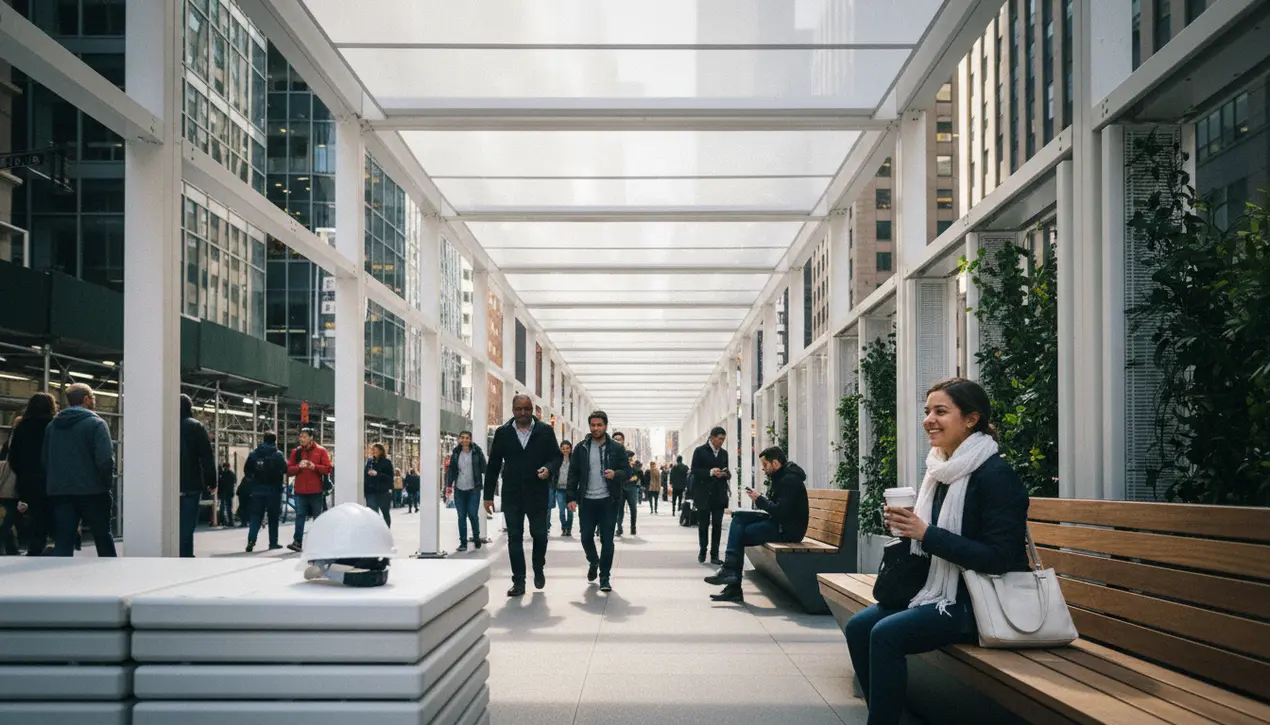
Othertransport & aviationInfrastructure Projects
NYC streets to be transformed with new scaffolding sheds.
SO
Sophia King
1 day ago7 min read3 comments
For decades, New York City's streetscape has been dominated by a familiar, grim aesthetic: the oppressive, dark-green plywood and steel scaffolding known as sidewalk sheds. These necessary but universally loathed structures, erected to protect pedestrians from falling debris on aging facades, have long been a visual blight, casting entire blocks into a perpetual, cavernous twilight and becoming a symbol of the city's infrastructural decay.Now, a radical new vision seeks to fundamentally reimagine this urban eyesore. The global sustainable design firm Arup, in collaboration with the architecture practice Practice for Architecture and Urbanism (PAU), has unveiled a transformative proposal to replace the standard shed with six innovative, modular systems.This isn't merely a cosmetic upgrade; it's a profound shift towards a pedestrian-centric urban philosophy, treating the shed not as a temporary barrier but as an opportunity to enhance public space. Imagine walking under a shed that isn't a tunnel of gloom but a structure with a translucent, light-diffusing canopy, perhaps even incorporating green walls or integrated seating, turning a zone of transit into a moment of pause and community interaction.The modularity of the proposed systems is key, allowing for customization based on the building's needs and the street's character—a system for a landmarked building on the Upper East Side could be aesthetically distinct from one servicing a new glass tower in Midtown, yet both would share core principles of safety, accessibility, and visual grace. This initiative echoes a broader movement in urban design where infrastructure is expected to perform multiple duties: safety, yes, but also beauty, environmental function, and social utility.Think of it as the UX design of the built environment; just as a well-designed app feels intuitive and delightful, a well-designed public realm should feel safe, welcoming, and inspiring. The current sheds are a classic case of bad UX—they solve one problem while creating several others, from obstructing light to harming small businesses whose storefronts vanish behind the plywood.The Arup and PAU proposal aims for a holistic solution, considering the entire user journey of a New Yorker navigating their city. While the implementation of such a city-wide standard faces formidable challenges, including cost, regulatory hurdles, and the sheer scale of New York's building stock, the conceptual breakthrough is monumental. It signals a future where the tools of urban maintenance and safety are not separate from the tools of placemaking, but are one and the same, weaving a thread of thoughtful design through the very fabric of our daily lives.
#urban design
#scaffolding
#pedestrian safety
#modular construction
#architecture
#New York City
#featured
Stay Informed. Act Smarter.
Get weekly highlights, major headlines, and expert insights — then put your knowledge to work in our live prediction markets.
Comments
Loading comments...
© 2025 Outpoll Service LTD. All rights reserved.